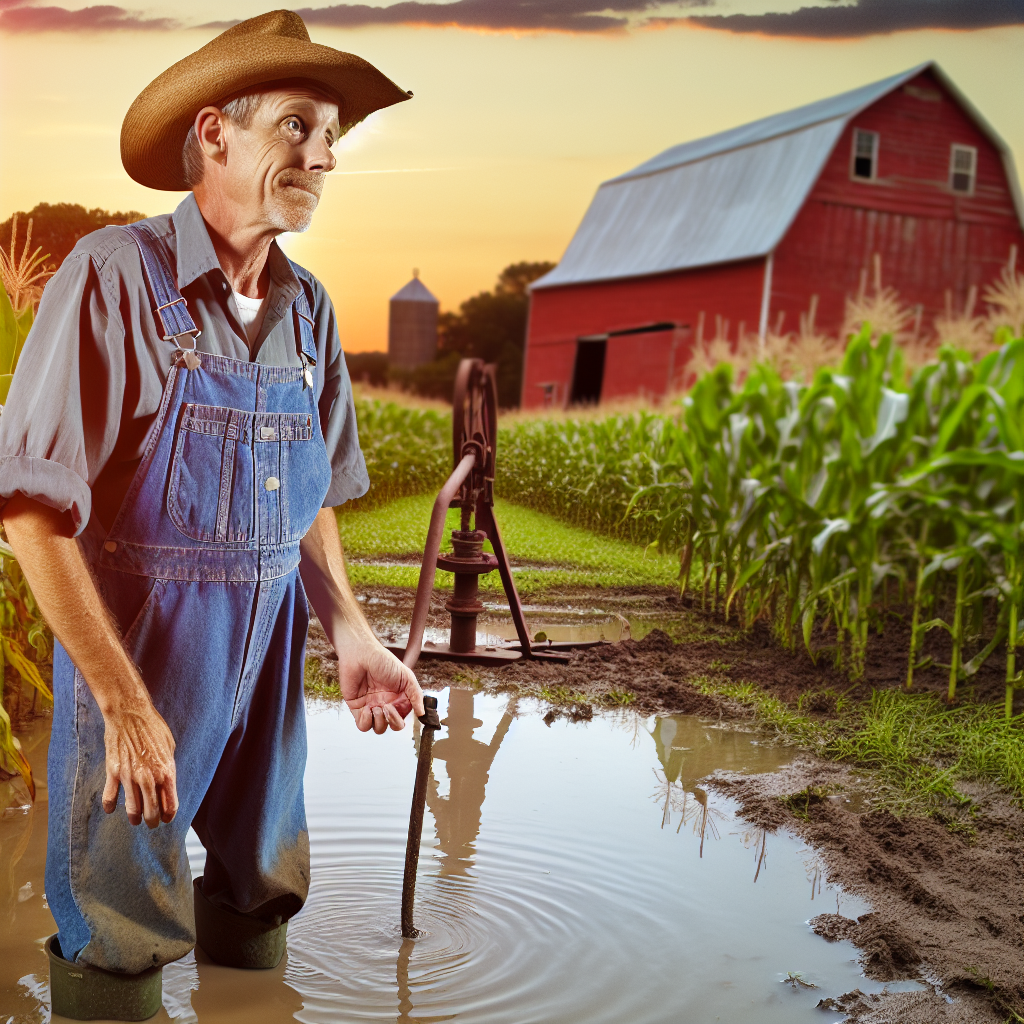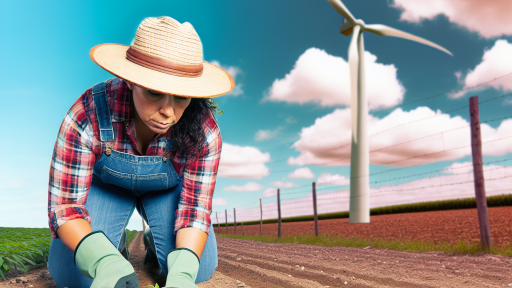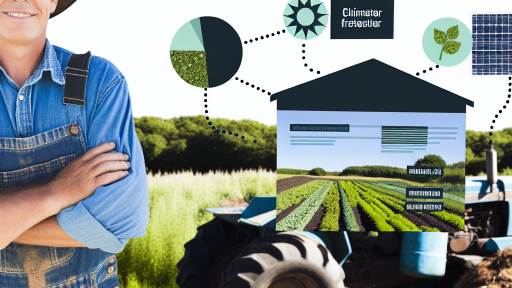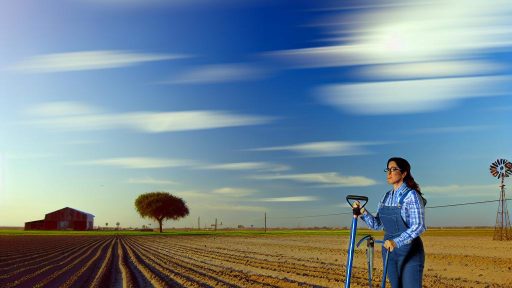Introduction to Excess Water Management in Agriculture
Excess water poses significant challenges for farmers globally.
It can lead to crop damage and diminished yields.
Effective water management is crucial in mitigating these impacts.
Farmers must adopt innovative tools and techniques for success.
This section explores key strategies and considerations.
The Importance of Managing Water
Proper water management helps maintain soil health.
Healthy soil promotes strong root development in crops.
Additionally, it reduces the risk of erosion.
This practice fosters sustainable agricultural systems.
Common Causes of Excess Water
Heavy rainfall can overwhelm drainage systems.
Soil compaction often exacerbates water retention.
Furthermore, poor land management practices contribute to waterlogging.
Understanding these causes is essential for effective intervention.
Key Strategies for Excess Water Management
Farmers can implement several strategies to manage excess water effectively.
- Installing drainage systems improves water flow.
- Utilizing cover crops enhances soil structure.
- Building contour plowing reduces runoff.
- Employing retention ponds captures and controls water levels.
Each technique plays a vital role in sustaining crop health.
Transform Your Agribusiness
Unlock your farm's potential with expert advice tailored to your needs. Get actionable steps that drive real results.
Get StartedTools and Technologies for Effective Management
Advancements in technology can enhance water management efforts.
Sensors provide real-time data on soil moisture levels.
Smart irrigation systems optimize water usage significantly.
Drones can survey fields for problem areas rapidly.
Integrating these tools leads to smarter farming practices.
Best Practices for Farmers
Farmers should regularly assess their water management strategies.
Conducting soil tests ensures proper nutrient and moisture balance.
Additionally, engaging with agricultural extension services offers valuable insights.
Collaboration among farmers can lead to improved techniques.
Continuous learning and adaptation are key in this field.
Understanding Water Accumulation: Causes and Effects
Causes of Water Accumulation
Water accumulation often results from heavy rainfall.
Additionally, poor drainage systems contribute significantly to this problem.
Soil compaction limits water absorption and exacerbates accumulation.
Furthermore, the slope of land can influence how water flows across fields.
In some regions, irrigation practices may lead to excess water retention.
Effects on Agriculture
Excess water can damage crops by drowning their roots.
Moreover, it can promote the growth of harmful molds and diseases.
Nutrient leaching occurs when heavy rain washes away essential soil elements.
This condition can also decrease soil aeration, damaging root systems.
Ultimately, farmers may face significant financial losses due to crop failures.
Long-Term Consequences
Persistent water accumulation affects soil health negatively.
Over time, this situation can degrade land productivity drastically.
Farmers may experience increased costs associated with remediation efforts.
Additionally, local ecosystems can suffer due to altered water flow patterns.
Showcase Your Farming Business
Publish your professional farming services profile on our blog for a one-time fee of $200 and reach a dedicated audience of farmers and agribusiness owners.
Publish Your ProfileFinally, community livelihoods may hinge on effective water management strategies.
Tools for Managing Excess Water: An Overview
Introduction to Water Management
Effective water management is crucial for farmers.
Excess water can harm crops and soil health.
Farmers need effective tools to mitigate water issues.
Drainage Systems
Drainage systems play a vital role in managing excess water.
Tile drains are commonly used in agricultural fields.
These systems help direct water away from crop roots.
Farmers can install surface drains for quick water evacuation.
Proper installation significantly reduces waterlogging.
Water Retention Techniques
Water retention techniques can also benefit farmers.
Farmers can use berms and swales to manage runoff.
These features help slow water flow and promote absorption.
Additionally, mulching improves soil moisture retention.
Retaining some water aids in plant growth during dry periods.
Soyl Management Practices
Soyl management practices are essential for excess water control.
Cover crops enhance soil structure and aid water absorption.
Crop rotation helps maintain soil health and moisture balance.
Minimal tillage practices protect soil structure and reduce runoff.
Farmers should regularly test soil health for optimal results.
Monitoring and Technology
New technologies offer innovative solutions for water management.
Weather monitoring systems help predict heavy rainfall events.
Using drones can provide aerial insights into field conditions.
Data analytics assist in making informed decisions for irrigation.
Community Collaboration
Farmers should collaborate with local organizations.
Sharing resources and knowledge strengthens water management efforts.
Participating in workshops can enhance understanding of techniques.
Community action can lead to improved water management practices.
You Might Also Like: Innovative Drainage Solutions for Modern Agriculture
Drainage Systems: Types and Best Practices
Understanding Drainage Systems
Drainage systems are essential for effective water management in agriculture.
They help reduce excess water in fields.
Farmers utilize various types of drainage systems.
Each system has unique benefits and challenges.
Types of Drainage Systems
Surface drainage systems remove excess water from the soil surface.
Typical methods include ditches and furrows.
These systems are effective for flat landscapes.
In contrast, subsurface drainage involves pipes below the soil surface.
Tile drainage is a common subsurface method.
This method prevents waterlogging by controlling groundwater levels.
Surface Drainage Systems
Surface drainage systems are simple and cost-effective.
They direct water away from crops through gravity.
Showcase Your Farming Business
Publish your professional farming services profile on our blog for a one-time fee of $200 and reach a dedicated audience of farmers and agribusiness owners.
Publish Your ProfileFarmers can enhance surface drainage by shaping fields.
Regular maintenance of drainage ditches is crucial.
This practice prevents blockages and ensures efficiency.
Subsurface Drainage Systems
Subsurface drainage systems are often more complex.
They typically require professional installation.
These systems lower the water table effectively.
They also improve soil aeration and root growth.
It is essential to monitor these systems for blockages.
Best Practices for Drainage Management
A comprehensive drainage strategy ensures long-term effectiveness.
Regular maintenance is key to preventing issues.
Farmers should inspect drainage systems seasonally.
They must also keep records of system performance.
Evaluate Soil Types
Understanding soil types aids in selecting appropriate drainage systems.
Different soils respond uniquely to various draining methods.
Conducting soil tests can provide valuable insights.
Incorporate Vegetative Solutions
Vegetative buffer strips can enhance drainage systems.
These strips reduce runoff and improve water quality.
Planting cover crops also aids in water absorption.
Employ Technology for Monitoring
Modern technology facilitates efficient drainage management.
Using sensors can help monitor water levels continuously.
Farm management software can integrate drainage system data.
This integration supports informed decision-making.
Learn More: Mitigating Greenhouse Gases through Smart Agriculture
Soil Management Techniques to Improve Water Absorption
Understanding Soil Composition
Soyl composition significantly influences water retention and drainage.
Different soil types have unique structures and absorption capacities.
Thus, understanding your soil’s makeup is essential for effective management.
Implementing Organic Matter
Adding organic matter enhances soil structure and improves water infiltration.
Composting decomposed plants and animal manure increases nutrient availability.
Moreover, organic matter aids in moisture retention during dry spells.
Utilizing Cover Crops
Cover crops protect soil from erosion and improve its health.
They enhance organic matter content and promote microbial activity.
Additionally, root systems help create pathways for water penetration.
Practicing No-Till Farming
No-till farming preserves soil structure and moisture levels.
This technique minimizes disruption and promotes biological activity.
As a result, soils become more resilient to drought and heavy rainfall.
Enhancing Soil Drainage
Proper drainage systems reduce waterlogging and improve soil health.
Installing drainage tiles can effectively manage excess water in fields.
Furthermore, creating swales helps redirect surface runoff.
Utilizing Mulching Techniques
Mulching conserves soil moisture and suppresses weed growth.
This practice also protects the soil from harsh weather conditions.
Showcase Your Farming Business
Publish your professional farming services profile on our blog for a one-time fee of $200 and reach a dedicated audience of farmers and agribusiness owners.
Publish Your ProfileOrganic mulches, like straw or wood chips, enrich soil over time.
Implementing Crop Rotation
Crop rotation promotes a diverse root structure in the soil.
Diverse root systems improve water infiltration and reduce compaction.
Additionally, different crops may utilize water differently, balancing demand.
Monitoring Soil Moisture
Regularly monitoring soil moisture assists in making informed decisions.
Using moisture sensors helps determine irrigation needs accurately.
This approach conserves resources while maintaining healthy crops.
See Related Content: Adaptation Tactics for Sustainable Agriculture Practices
The Role of Cover Crops in Water Management
Understanding Cover Crops
Cover crops are plants grown to cover the soil rather than for harvest.
They play a vital role in improving soil health.
These crops help prevent soil erosion and maintain moisture levels.
Farmers often use them during the off-season.
Additionally, cover crops help suppress weeds naturally.
Benefits of Cover Crops in Water Management
Cover crops can effectively reduce surface runoff.
This reduction helps in retaining water within the soil.
Moreover, they enhance soil structure and porosity.
A well-structured soil can absorb more water.
This ultimately minimizes waterlogging issues for farmers.
Types of Cover Crops
Several types of cover crops are beneficial for water management.
- Legumes, such as clover and vetch, fix nitrogen in the soil.
- Brassicas, including radishes and mustards, break up compacted soil.
- Grasses, like rye and oats, provide excellent ground cover.
Strategies for Implementing Cover Crops
Farmers should plan cover crop planting based on their specific needs.
Timing is crucial; plant cover crops after the main harvest.
Choose varieties suited for local climate conditions.
Additionally, consider the specific soil issues of your farm.
Regularly monitor the growth and health of cover crops.
Integrating Cover Crops with Other Water Management Techniques
Combining cover crops with drainage systems enhances water management.
This integration helps direct excess water efficiently.
Similarly, incorporating crop rotation can boost overall productivity.
Farmers can also utilize contour farming with cover crops.
This method further reduces erosion and surface runoff.
Discover More: Adapting Farming Practices To Climate Shifts

Innovative Technologies for Monitoring Soil Moisture Levels
Introduction to Soil Moisture Monitoring
Soil moisture monitoring is essential for effective water management in farming.
Farmers can make informed decisions based on accurate moisture data.
This section explores innovative technologies for monitoring soil moisture.
Types of Soil Moisture Sensors
Several types of soil moisture sensors exist today.
These sensors vary in functionality and application.
- Capacitive sensors measure the change in capacitance.
- Tensiometers gauge soil moisture tension.
- Time Domain Reflectometry (TDR) sensors utilize electromagnetic waves.
Each type of sensor offers unique advantages.
Benefits of Using Soil Moisture Sensors
Utilizing soil moisture sensors enhances irrigation efficiency.
They contribute to water conservation in agriculture.
Moreover, sensors help prevent over-irrigation.
This technology improves crop yields through optimized watering schedules.
Showcase Your Farming Business
Publish your professional farming services profile on our blog for a one-time fee of $200 and reach a dedicated audience of farmers and agribusiness owners.
Publish Your ProfileRemote Sensing Technologies
Remote sensing technologies provide a broader perspective.
These systems use satellite or aerial data to analyze soil conditions.
Farmers can assess moisture levels over large areas quickly.
Remote sensing enables precision agriculture practices.
Data Analysis and Applications
Data from soil moisture sensors requires careful analysis.
Farmers can use software tools to interpret this data effectively.
These insights guide irrigation practices and crop management.
Furthermore, accurate predictions can lead to improved planning.
Case Studies of Successful Implementation
Many farmers have successfully integrated moisture monitoring technologies.
For example, Maria Lopez in California has seen improved yields.
Her use of capacitive sensors reduced water usage by 30%.
Similarly, Blue Horizon Farms implemented remote sensing with notable success.
They reported a significant decrease in irrigation costs.
Future Trends in Soil Moisture Monitoring
The future of soil moisture monitoring looks promising.
Emerging technologies will offer even greater accuracy.
Smart irrigation systems are becoming increasingly popular.
These systems automatically adjust based on real-time soil data.
Case Studies: Successful Excess Water Management on Farms
Innovative Drainage Systems
Martin Farms implemented a state-of-the-art drainage system.
This system improved water flow and reduced pooling in fields.
Consequently, crop yields increased significantly during heavy rains.
Farmers reported less soil erosion and better land management.
Soil Management Techniques
Sara’s Organic Farm applied cover crops to enhance soil health.
Cover crops helped retain moisture and minimized runoff.
As a result, the farm maintained productivity during excessive rainfall.
Constructed Wetlands
Greenfield Farms constructed wetlands to manage excess water sustainably.
These wetlands naturally filter water and support local wildlife.
The solution also provided valuable irrigation during dry periods.
Technology Integration
Tech Innovations, a local startup, introduced smart sensors on farms.
These sensors monitored soil moisture levels in real-time.
Farmers used this data to optimize irrigation schedules effectively.
Furthermore, they adapted to changing water conditions efficiently.
Community Support and Collaboration
Agricultural co-operatives in Willow Creek shared best practices.
They developed collaborative water management strategies among farmers.
This partnership improved resilience against flooding and waterlogging.
Farmers noted a decrease in crop losses due to better planning.
Educational Initiatives
Local universities hosted workshops on water management solutions.
Farmers learned about new techniques and innovative tools.
Many adopted these practices and saw improved water management.
This education fostered an informed farming community dedicated to sustainability.
Best Strategies for Sustainable Water Management in Farming
Adopting Smart Irrigation Techniques
Smart irrigation systems optimize water usage effectively.
Showcase Your Farming Business
Publish your professional farming services profile on our blog for a one-time fee of $200 and reach a dedicated audience of farmers and agribusiness owners.
Publish Your ProfileThey adjust watering schedules based on weather data.
Additionally, they minimize water waste and promote healthy crops.
Farmers can install soil moisture sensors to monitor conditions.
This technology ensures proper hydration levels are maintained.
Implementing Rainwater Harvesting Practices
Rainwater harvesting captures and stores excess rainwater.
This method provides a sustainable water source for irrigation.
Farmers can greatly reduce dependency on municipal water supplies.
Installing collection tanks can enhance rainwater management.
Furthermore, this practice lessens the impact of droughts.
Utilizing Cover Crops and Mulching
Cover crops improve soil health and retain moisture.
They also prevent soil erosion during heavy rainfall.
Mulching reduces evaporation and regulates soil temperature.
This combined approach protects crops from water stress.
Moreover, it enhances biodiversity within the farming system.
Managing Drainage Systems Effectively
Proper drainage systems prevent waterlogging in fields.
Farmers can use contour farming to manage runoff.
This method maintains soil integrity while directing excess water.
Additionally, installing drainage ditches can enhance flow control.
These practices ensure sustainable farming activities continue.
Engaging with Local Water Governance
Farmers should participate in local water management initiatives.
Engaging with authorities can lead to better resource allocation.
Collaboration fosters policies that support sustainable practices.
Moreover, sharing knowledge within the community promotes innovation.
Active participation in governance leads to long-term benefits.
Additional Resources
On-Farm Evaluation of Treatment Methods for Excess Nutrients in …




